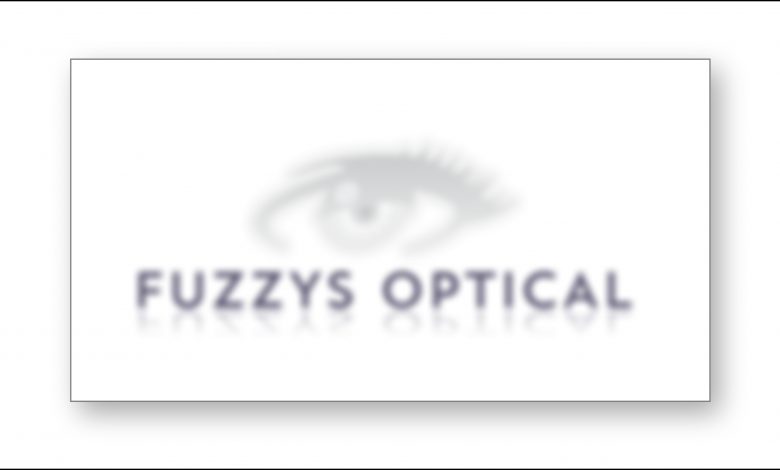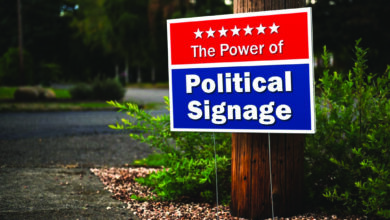The owner loves the design you came up with, and so does the landlord. In fact, the entire design approval committee thinks it’s a beautiful design. However, someone in brand management mentioned that they measured the sign face and the logo, and the logo is not sitting perfectly centered top to bottom or left to right on the sign face, and they want you to move it up to where it should be. Once you adjust it, they are ready to sign off on the design.
Our industry demands that we merge architectural and mechanical drafting disciplines with the graphic disciplines of commercial sign design. Sometimes we need to educate those who are not in the know on how visual balancing trumps mechanical balancing when it comes to signage.
What is the difference between mechanical versus visual balancing?
Mechanical balancing uses a mathematical equation to provide equal spacing around a design, from top to bottom and left to right. Some firms depend on mechanical balancing because their world is driven by 90-degree angles and mathematical equations.
Visual balancing of a design is much different than mechanical balancing. Merriam-Webster defines balance as “an aesthetically pleasing integration of elements.” This is where creativity takes the lead and overrides the rigidity behind the math of equally spacing a design from the top and bottom and left to right within the available space. Does the design look like it’s properly spaced on the sign face? If it does, it probably follows a visual balancing discipline.
Simply put, LRIR (looks right, is right) is the process of visually balancing the design within the space provided, so it looks right to the naked eye and appears balanced within the space provided.
For those of us in the sign industry, using mechanical balancing will, in most cases, produce a sign design that looks like it’s sitting too low on the sign face, or too far to the left or right of the center.
Logo or graphic placement on the sign face
To have an aesthetically pleasing face layout, you must visually kern or balance the spacing of the graphic elements (logo) within the space provided. It’s all about the balance of the negative space and graphic elements, and how it all interacts with the available space on the sign face. As you can see in this example (Fig. 1 and Fig. 2 above) the graphic elements have been mechanically spaced for a mathematically consistent layout. Now take a look at Image 3. In this example, the same logo has been moved up and to the right for a better visual balance. The sign now looks like it has been well planned, and is more aesthetically pleasing to the eye, and the name of the business is now the focal point of the sign, not the eye graphic.
Text only on a sign face
Text must also follow the LRIR rule. As seen here in the following example (Fig. 4) when mechanically spaced, the letters appear to be sitting too low on the sign face. It’s very subtle, but it’s there. It appears to be sitting low on the face. When you apply the LRIR rule, you must pay careful attention to the shape of the letters, the kerning, and its placement on the sign face. (Fig. 5).
Squinting—the sign designer’s free visual balancing app
What does squinting have to do with visual balance? It’s a handy built-in app that our brains give to us for free. All we have to do is remember to use it. Here is how squinting works. When you view a sign design, your eyes take in all of the graphics, all at once, giving everything an equal impact upon your brain. Squinting at the design makes the less dominant elements fuzz-out and they fall into the background, allowing the dominance of the graphic to shine through. (Fig. 6).
You can use this tool everywhere and anywhere you go, and it works on every application of graphic design and layout. Try it for yourself. Once you identify the dominant graphic elements of the design, it’s much easier to know how to visually balance it.
LRIR opinion vs. formula
As it goes with most aspects of the sign industry, opinion plays a huge role in the final design of a sign. Some designers prefer a tight fit for the text or logo on the sign and some prefer more space around it. I’m not going to say that making the logo fit the space provided is incorrect, it’s just that sometimes bigger is not always better and if the logo or text is too big, it’s actually harder to read at a distance.
So how do you know, truly, how a logo should or shouldn’t fit onto a sign face? There are a few formulas out there, but to utilize a template or formula can be tedious at best. Looks right, is right is really all about exactly what it says—if it looks right, it is right. Your opinion, your viewpoint, and your reasons for placing the logo a bit higher on the sign face all come down to you. Are you confident enough to insist that your LRIR design is the correct way to layout the sign? Have you practiced your five-minute elevator pitch on exactly what you will tell your salesperson if they question you about your design?
Practice makes perfect. Look at your current sign designs and put them to the LRIR test. You might be pleasantly surprised when you drive down the street and see your LRIR designed sign from a distance.











